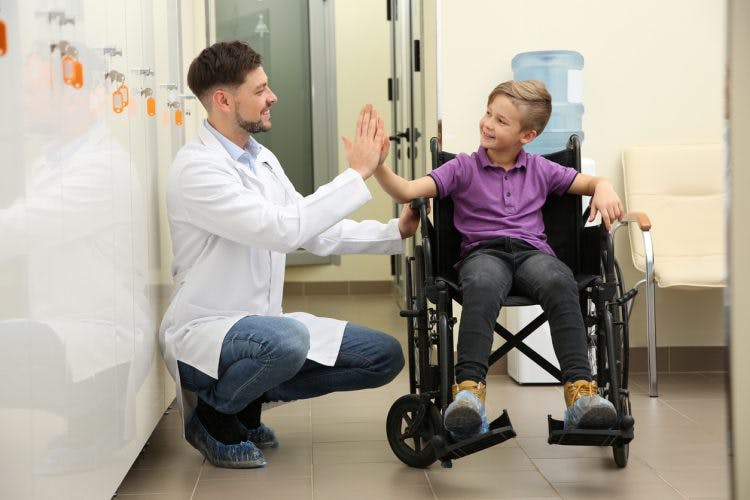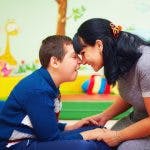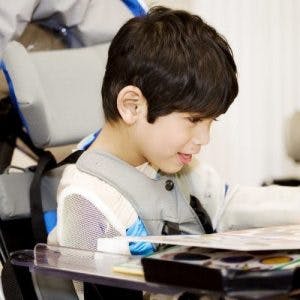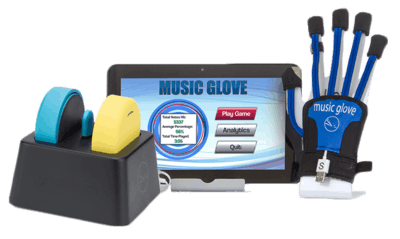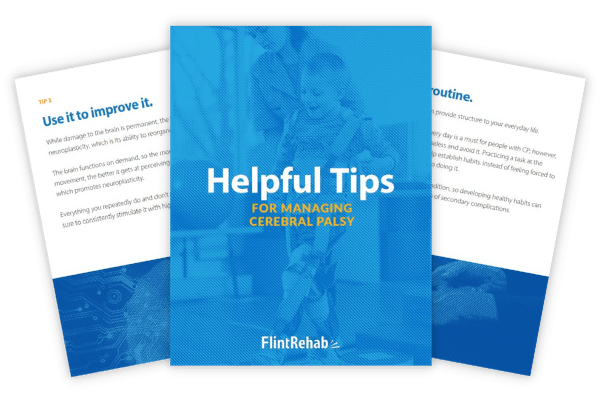Individuals with cerebral palsy are more likely to develop osteoporosis than those without CP. Osteoporosis is a condition characterized by weak, porous bones. This article will explain how cerebral palsy affects bone health and how to strengthen the bones.
What Causes Osteoporosis in Individuals with Cerebral Palsy?
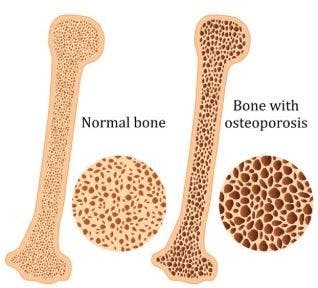
Bone health is important to pay attention to with cerebral palsy. Bones are actually living tissue that are maintained by the body and constantly broken down and replaced. Osteoporosis is a condition that occurs when new bone formation does not keep up with the loss of old bone.
Many factors associated with cerebral palsy are also associated with low bone mineral density and osteoporosis. Common risk factors for osteoporosis among individuals with cerebral palsy include immobility, poor nutrition, and adverse side effects of medications.
Immobility
Cerebral palsy is a motor disability caused by damage to the developing brain before or during birth, or in early childhood. More severe cases of cerebral palsy can make it very difficult for individuals to control their legs.
Generally, children that cannot walk spend the majority of their time in their wheelchairs, and the muscles of their legs are largely unused.
Our bodies function on demand. Think ‘use it or lose it.’ It takes energy to conserve bone density and muscle mass. If you do not use your legs, the body doesn’t see a point in expending the energy to maintain them.
Because these children don’t get to practice bearing weight on their legs, their bones and muscles are generally very weak.
The longer a child goes without using their legs, the weaker the muscles and bones become. It also becomes more difficult to attempt to resume functional use of the legs due to muscle wasting and brittle bones.
Poor Nutrition
Another factor that can cause osteoporosis in children with cerebral palsy is poor nutrition. Sometimes, children with cerebral palsy cannot control the muscles in their mouths. This makes it very difficult for them to chew and swallow, which ultimately results in lacking nutrition.
Vitamin D and calcium are essential for maintaining bone health. The easiest way for people to get their daily dose of vitamin D is through sunlight. However, many children with cerebral palsy tend to not go outside as much as other children due to limited mobility.
Vitamin D and calcium deficiencies result in softened bones and impair growth.
Anticonvulsant Use
Some children with cerebral palsy take anticonvulsants to manage symptoms and associative conditions like tremors and epilepsy. There is increasing evidence suggesting that anticonvulsants are associated with a greater risk of osteoporosis.
One explanation is that anticonvulsants induce enzymes that reduce the availability of active vitamin D and decreases calcium absorption. Bone loss due to the use of anticonvulsants occurs slowly but gradually and often goes unrecognized until it becomes problematic.
How to Prevent Osteoporosis in Cerebral Palsy Patients
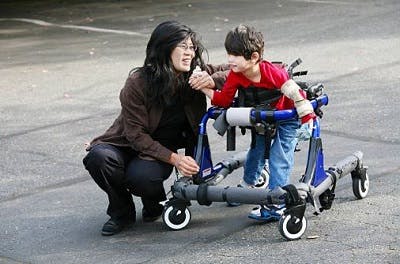
It’s suggested that “bone mineral density achieved by the end of adolescence will determine the risk for pathological fractures and osteoporosis later in life.”
This study found that nearly 40% of middle-aged adults with cerebral palsy have lower than normal bone mineral density. Therefore, taking preventative measures to support bone health in children with cerebral palsy is necessary.
The best way to prevent osteoporosis in individuals with cerebral palsy is to reduce the major risk factors.
1. See a Physical Therapist
A physical therapist will assess your child’s physical abilities and guide them through weight-bearing exercises to develop leg strength and improve overall mobility. Weight-bearing exercise is proven to significantly improve bone mineral density by placing mechanical stress on the bones.
The femur is the most commonly fractured bone in individuals with cerebral palsy. The main way the femur naturally bears weight is during standing. Therefore, a physical therapist will likely have your child practice bearing weight by using a standing frame. They also may provide manual force against the leg to encourage activation of the leg muscles and bone strength if your child is unable to stand.
Another option for children who require a power wheelchair but are able to bear weight through their legs is a standing wheelchair. If your child is able to bear weight through their legs for extended periods of time, but is unable to stand independently or without extensive assistance, they may benefit from a standing wheelchair. There are various styles of standing wheelchairs, but most are power wheelchairs that allow the user to convert from a normal seated position to a standing position, using the chair to support them.
Individuals can then use the wheelchair to freely move while standing. This not only can increase the amount of time they are weight-bearing through their legs throughout the day but also can improve their circulation and ability to socially interact with peers at their level.
2. Increase Exposure to Sunshine
Another way individuals with cerebral palsy can decrease their chances of developing osteoporosis is to get some sun exposure. As a general guideline, encourage your child to stay out in the sunshine for at least 10-15 minutes, 3 times a week.
Various factors can affect vitamin D absorption (how strong the sun is, whether your child is wearing sunscreen, etc), so use your best judgment and adjust accordingly.
3. Add More Vitamin D and Calcium Into Your Child’s Diet

To prevent osteoporosis, try to incorporate more vitamin D and calcium-rich foods into your child’s diet. Foods that are high in vitamin D include fatty fish, egg yolks, and mushrooms. Dairy products (cheese, yogurt, milk), dark leafy greens, and tofu are rich in calcium.
While it is ideal to get all your major nutrients from food, children with cerebral palsy may find it easier to take supplements because they require less chewing. You can also try blending your child’s food to minimize chewing. Many calcium-rich foods are easy to incorporate into smoothies.
If your child also struggles to swallow, it may be more beneficial for your child to use a feeding tube. Discuss this with your child’s doctor to ensure that your child is able to get the appropriate nutrients each day.
Depending on the severity of swallowing difficulty, the doctor may refer to you a speech-language pathologist. They can further explore your child’s swallowing skills and potentially provide strategies and interventions to improve their ability to swallow.
4. Speak to Your Child’s Doctors About Medications
It might also be a good idea to speak to your child’s doctor about bisphosphonates. Bisphosphonates are medications that slow down the loss of bone density. Although they are widely used for adults, bisphosphonate use in children can be controversial due to a lack of long-term research. Some side effects include fever, flu-like symptoms, nausea, vomiting, and abdominal pain.
Cerebral Palsy and Osteoporosis

Generally, the more severe your cerebral palsy is, the less mobility you will have. This can significantly increase chances of developing osteoporosis.
Therefore, it’s essential to focus on early management of bone health by practicing weight-bearing exercises, getting exposure to sunlight, consuming enough vitamin D and calcium, and taking the right medications.
Hopefully, this article helped you better understand why individuals with cerebral palsy are more likely to develop osteoporosis than the general population and how to prevent it.

